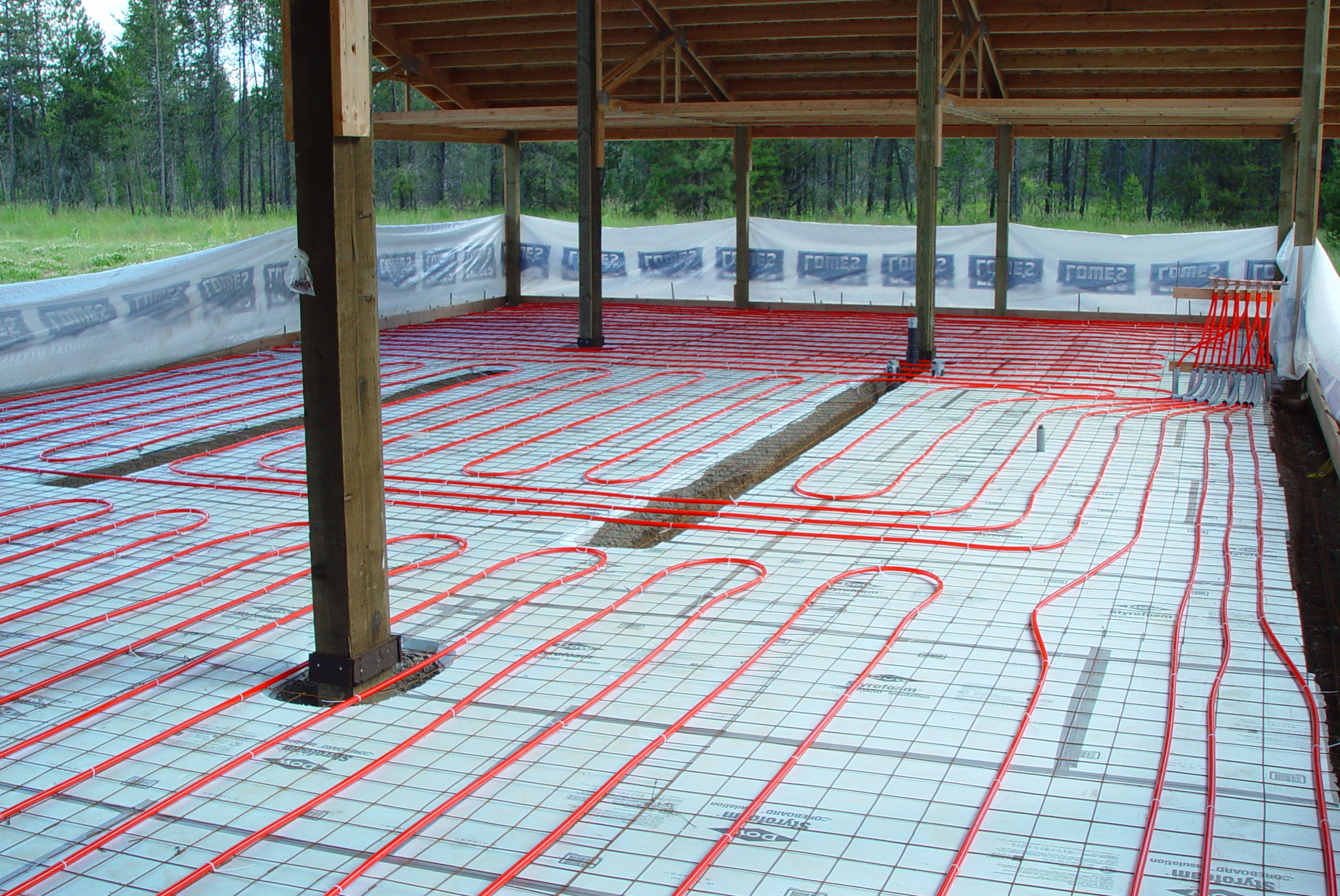

Rather than a simple room thermostat, many radiant floor designers install control systems that also adjust the circulating water temperature based on outside air temperature and the temperature of the slab. The risk of overheating with concrete-slab radiant floor heating systems in very energy-efficient buildings leads some designers to incorporate sophisticated control systems. If a concrete slab is "charged" with heat during the early morning hours and the surface is warmed to the point where it cannot readily absorb solar radiation striking it, that solar heat will more directly heat the air, increasing the risk of overheating. In a very well-insulated house, that lag time can result in overheating, particularly if there are other sources of heat being delivered to the space, such as passive solar. The time lag of heat movement through concrete can also be a problem. Time lag of heat movement through radiant floor heating $10,000 for a typical radiant floor heating system, savings of $6,000 to over $9,000 would be possible-and that savings could pay for most of the envelope improvements required to bring the heating load so far down that space heating (instead of distributed heat) becomes a viable option. At $1,000 to $2,000 apiece for Rinnai heaters (installed) or a few hundred dollars for electric baseboard vs. In most highly energy-efficient houses, the same high level of comfort provided by a radiant floor heating should be achievable simply by installing one or two small, quiet, high-efficiency through-the-wall gas heaters or a few short sections of electric baseboard heat. Investing so much money in the building envelope and still putting in an expensive radiant floor heating system eliminates the potential for offsetting much of the extra cost in building envelope improvements through savings in the mechanical equipment-one of the key principles of integrated, whole-systems building design. It just doesn't make sense to put in a $10,000 heating system to provide $100 worth of heat per year. In such a house, putting in an expensive heating system doesn't make good economic sense. To achieve that level of energy performance requires a significant investment in the building envelope (for example, double 2x4 walls). ☌), which would translate into very low heating costs.Such a house will use very little heating energy-probably less than 2.0 Btu/ft2 We're not talking about conventional houses, but high-performance green homes. It can be reasonably argued that a green home in a moderate-to-cold climate should have very high levels of insulation (at least R-25 walls and R-40 ceiling/roof), extremely low infiltration rates, high-performance glazings (unit U-factors below 0.3), and at least some passive solar gain or suntempering. That said, however, super-energy-efficient green buildings may not be as well-suited to radiant floor heating. You usually pay more for it, but the enhanced comfort, potential energy savings, and other benefits can easily justify the extra cost. In the right application, radiant floor heating is a superb heat-delivery system-in fact, perhaps the very best.


 0 kommentar(er)
0 kommentar(er)
